Potřebujeme váš souhlas k využití jednotlivých dat, aby se vám mimo jiné mohly ukazovat informace týkající se vašich zájmů. Souhlas udělíte kliknutím na tlačítko „OK“.
ASTM E2492-07(2012)
Standard Test Method for Evaluating Springback of Sheet Metal Using the Demeri Split Ring Test (Withdrawn 2017)
Automaticky přeložený název:
Standardní zkušební metoda pro hodnocení odpružení plechu pomocí Demeri Rozdělit Ring test
NORMA vydána dne 1.4.2012
Informace o normě:
Označení normy: ASTM E2492-07(2012)
Poznámka: NEPLATNÁ
Datum vydání normy: 1.4.2012
Kód zboží: NS-45423
Počet stran: 6
Přibližná hmotnost: 18 g (0.04 liber)
Země: Americká technická norma
Kategorie: Technické normy ASTM
Kategorie - podobné normy:
Anotace textu normy ASTM E2492-07(2012) :
Keywords:
accepted reference value, accuracy, bias, cup drawing, Demeri Split Ring Test, drawability, formability, forming, interlaboratory study, precision, precision conditions, repeatability, reproducibility, springback, standard deviation, stretch-draw forming, Split ring test, Springback, Testing, Sheet metal, ICS Number Code 77.040.10 (Mechanical testing of metals)
Doplňující informace
| Significance and Use |
|
The formability of materials is affected by springback, the difference between the final shape of a part and the shape of the die that formed it. Materials having a large amount of springback create difficulties for the die designer and make die rework much more likely and complicated. This can add months and great costs to the achievement of successful dies. While dealing with springback in traditional metals is largely overcome by experience, new metals often have so much springback that they can only be used after much trial and error. The quantification and prediction of the tendency of metals to springback is addressed by this test method. The magnitude of the springback is a convolution of the elastic modulus, the flow stress of the metal of interest, the sheet metal thickness and the amount and type of cold work introduced by the forming process. Since the cup forming process contains features of many forming operations, the amount of springback measured by the Demeri split ring test is indicative of the behavior of the metal in many stamping operations. The amount of springback that occurs in this test is very large compared to other approaches. This improves measurement accuracy and reduces experimental error in all types of formable metals. This test does not require measurement fixtures or any sophisticated profiling equipment for accurate measurement of springback. Conventional length measuring instruments are all that is needed to perform the required measurements. This test can be used to rank materials according to their tendency to springback after a forming operation (see Refs 1-3). Since springback depends on the sheet thickness, metals should be compared at the same thickness. Experience has shown that the test can also be used in conjunction with an appropriate analysis to predict quantitatively the amount of springback occurring after a forming operation (see Refs 2-9). This test provides a method to compare springback predictions by various numerical simulation codes. Test results can be used to calibrate computer simulation codes by selecting proper control parameters and appropriate material models to achieve satisfactory correlation between simulation and test results. Test data can be used to evaluate and improve current forming and simulation capabilities. The experimental setup and test procedure are simple, and test results are highly repeatable. |
| 1. Scope |
|
1.1 This test method provides a means of evaluating the springback behavior of metals in a test that simulates a stretch-draw forming process. The test method can also be used to calibrate computer simulation codes by selecting appropriate control parameters to achieve satisfactory correlation between simulation and test results. 1.2 The values stated in SI units are to be regarded as standard. No other units of measurement are included in this standard. 1.3 This standard does not purport to address all of the safety concerns, if any, associated with its use. It is the responsibility of the user of this standard to establish appropriate safety and health practices and determine the applicability of regulatory limitations prior to use. |
Podobné normy:
Historická
15.11.2012
Historická
1.6.2012
Historická
1.7.2012
Historická
1.5.2010
Historická
1.11.2010
Historická
1.5.2014
Doporučujeme:
Aktualizace technických norem
Chcete mít jistotu, že používáte pouze platné technické normy?
Nabízíme Vám řešení, které Vám zajistí měsíční přehled o aktuálnosti norem, které používáte.
Chcete vědět více informací? Podívejte se na tuto stránku.


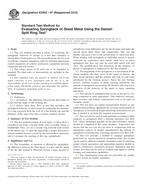
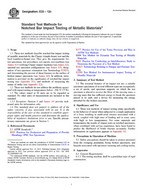 ASTM E23-12c
ASTM E23-12c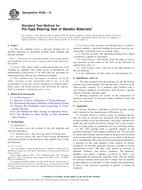 ASTM E238-12
ASTM E238-12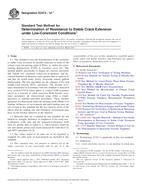 ASTM E2472-12e1
ASTM E2472-12e1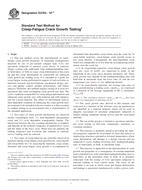 ASTM E2760-10e2
ASTM E2760-10e2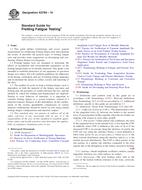 ASTM E2789-10
ASTM E2789-10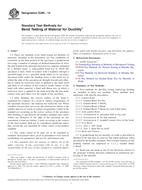 ASTM E290-14
ASTM E290-14
 Cookies
Cookies
